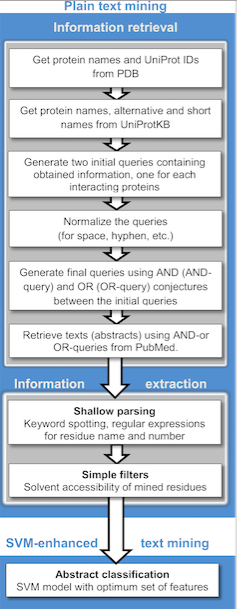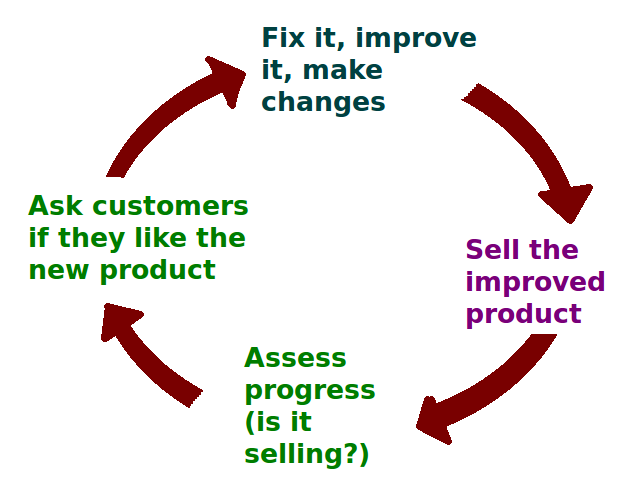|
Customer Intelligence
Customer intelligence (CI) as part of business intelligence is the process of gathering information regarding customers, and their details and activities, to build deeper and more effective customer relationship management, customer relationships and improve decision-making by vendors. Customer relationship management Customer intelligence is a key component of effective customer relationship management (CRM), and when effectively implemented it is a rich source of insight into the behaviour and experience of a company's customer base. As an example, some customers walk into a store and walk out without buying anything. Information about these customers/prospects (or their visits) may not exist in a traditional CRM system, as no sales are entered on the store cash register. Although no commercial transaction took place, knowing ''why'' customers leave the store (perhaps by asking them, or a store employee, to complete a survey) and using this data to make inferences about custo ... [...More Info...] [...Related Items...] OR: [Wikipedia] [Google] [Baidu] |
Business Intelligence
Business intelligence (BI) consists of strategies, methodologies, and technologies used by enterprises for data analysis and management of business information. Common functions of BI technologies include Financial reporting, reporting, online analytical processing, analytics, Dashboard (business), dashboard development, data mining, process mining, complex event processing, business performance management, benchmarking, text mining, Predictive Analysis, predictive analytics, and prescriptive analytics. BI tools can handle large amounts of structured and sometimes unstructured data to help organizations identify, develop, and otherwise create new strategic business opportunities. They aim to allow for the easy interpretation of these big data. Identifying new opportunities and implementing an effective strategy based on insights is assumed to potentially provide businesses with a competitive market advantage and long-term stability, and help them take strategic decisions. Busine ... [...More Info...] [...Related Items...] OR: [Wikipedia] [Google] [Baidu] |
Root Cause Analysis
In science and engineering, root cause analysis (RCA) is a method of problem solving used for identifying the root causes of faults or problems. It is widely used in IT operations, manufacturing, telecommunications, industrial process control, accident analysis (e.g., in aviation, rail transport, or nuclear plants), medical diagnosis, the healthcare industry (e.g., for epidemiology), etc. Root cause analysis is a form of inductive inference (first create a theory, or ''root'', based on empirical evidence, or ''causes'') and deductive inference (test the theory, i.e., the underlying causal mechanisms, with empirical data). RCA can be decomposed into four steps: # Identify and describe the problem clearly # Establish a timeline from the normal situation until the problem occurrence # Distinguish between the root cause and other causal factors (e.g., via event correlation) # Establish a causal graph between the root cause and the problem. RCA generally serves as input to a r ... [...More Info...] [...Related Items...] OR: [Wikipedia] [Google] [Baidu] |
Customer Insight
A customer insight, or consumer insight (CI), is an interpretation of trends in human behaviors which aims to increase the effectiveness of a product or service for the consumer, as well as increase sales for the financial benefit of those provisioning the product or service. There is an overlap between market research and customer insights. While market researchers can produce consumer insights, not all insights require market research techniques. The insights can be acquired using competitive intelligence, big data, machine learning, social media listening, geomarketing, and text analytics, as well as market research, predictive analytics and database marketing. Specifically, consumer insights is a field that focuses on analyzing market research and acting as a bridge between research and marketing departments within a company. Consumer insight is the intersection between the interests of the consumer and the features of a brand A brand is a name, term, design, symbol ... [...More Info...] [...Related Items...] OR: [Wikipedia] [Google] [Baidu] |
Customer Analytics
Customer analytics is a process by which data from customer behavior is used to help make key business decisions via market segmentation and predictive analytics. This information is used by businesses for direct marketing, site selection, and customer relationship management. Marketing provides services to satisfy customers. With that in mind, the productive system is considered from its beginning at the production level, to the end of the cycle at the consumer. Customer analytics plays an important role in the prediction of customer behavior. Uses ;Retail:Although until recently over 90% of retailers had limited visibility on their customers, with increasing investments in loyalty programs, customer tracking solutions and market research, this industry started increasing use of customer analytics in decisions ranging from product, promotion, price and distribution management. The most obvious use of customer analytics in retail today is the development of personalized communic ... [...More Info...] [...Related Items...] OR: [Wikipedia] [Google] [Baidu] |
Contact Centre (business)
A call centre ( Commonwealth spelling) or call center ( American spelling; see spelling differences) is a managed capability that can be centralised or remote that is used for receiving or transmitting a large volume of enquiries by telephone. An inbound call centre is operated by a company to administer incoming product or service support or information inquiries from consumers. Outbound call centres are usually operated for sales purposes such as telemarketing, for solicitation of charitable or political donations, debt collection, market research, emergency notifications, and urgent/critical needs blood banks. A contact centre is a further extension of call centres telephony based capabilities, administers centralised handling of individual communications, including letters, faxes, live support software, social media, instant message, and email. A call center was previously seen as an open workspace for call center agents, with workstations that included a computer ... [...More Info...] [...Related Items...] OR: [Wikipedia] [Google] [Baidu] |
Text Analytics
Text mining, text data mining (TDM) or text analytics is the process of deriving high-quality information from plain text, text. It involves "the discovery by computer of new, previously unknown information, by automatically extracting information from different written resources." Written resources may include websites, books, emails, reviews, and articles. High-quality information is typically obtained by devising patterns and trends by means such as pattern recognition, statistical pattern learning. According to Hotho et al. (2005), there are three perspectives of text mining: information extraction, data mining, and knowledge discovery in databases (KDD). Text mining usually involves the process of structuring the input text (usually parsing, along with the addition of some derived linguistic features and the removal of others, and subsequent insertion into a database), deriving patterns within the structured data, and finally evaluation and interpretation of the output. 'High qu ... [...More Info...] [...Related Items...] OR: [Wikipedia] [Google] [Baidu] |
Market Research
Market research is an organized effort to gather information about target markets and customers. It involves understanding who they are and what they need. It is an important component of business strategy and a major factor in maintaining competitiveness. Market research helps to identify and analyze the needs of the market, the market size and the competition. Its techniques encompass both qualitative techniques such as focus groups, in-depth interviews, and ethnography, as well as quantitative techniques such as customer surveys, and analysis of secondary data. It includes social and opinion research, and is the systematic gathering and interpretation of information about individuals or organizations using statistical and analytical methods and techniques of the applied social sciences to gain insight or support decision making. Market research, marketing research, and marketing are a sequence of business activities; sometimes these are handled informally. The field of ... [...More Info...] [...Related Items...] OR: [Wikipedia] [Google] [Baidu] |
Customer Satisfaction
Customer satisfaction is a term frequently used in marketing to evaluate customer experience. It is a measure of how products and services supplied by a company meet or surpass customer expectation. Customer satisfaction is defined as "the number of customers, or percentage of total customers, whose reported experience with a firm, its products, or its services (ratings) exceeds specified Contentment, satisfaction goals".. Enhancing customer satisfaction and fostering customer loyalty are pivotal for businesses, given the significant importance of improving the balance between customer Attitude (psychology), attitudes before and after the consumption process. Expectation confirmation theory, Expectancy disconfirmation theory is the most widely accepted theoretical framework for explaining customer satisfaction. However, other frameworks, such as equity theory, attribution theory, Contrast theory of meaning, contrast theory, assimilation theory, and various others, are also used to ... [...More Info...] [...Related Items...] OR: [Wikipedia] [Google] [Baidu] |
Customer Relationship Management
Customer relationship management (CRM) is a strategic process that organizations use to manage, analyze, and improve their interactions with customers. By leveraging data-driven insights, CRM helps businesses optimize communication, enhance customer satisfaction, and drive sustainable growth. CRM systems compile data from a range of different communication channels, including a company's website, telephone (which many services come with a softphone), email, live chat, marketing materials and more recently, social media. They allow businesses to learn more about their target audiences and how to better cater to their needs, thus retaining customers and driving sales growth. CRM may be used with past, present or potential customers. The concepts, procedures, and rules that a corporation follows when communicating with its consumers are referred to as CRM. This complete connection covers direct contact with customers, such as sales and service-related operations, forecasting, ... [...More Info...] [...Related Items...] OR: [Wikipedia] [Google] [Baidu] |
Speech Recognition
Speech recognition is an interdisciplinary subfield of computer science and computational linguistics that develops methodologies and technologies that enable the recognition and translation of spoken language into text by computers. It is also known as automatic speech recognition (ASR), computer speech recognition or speech-to-text (STT). It incorporates knowledge and research in the computer science, linguistics and computer engineering fields. The reverse process is speech synthesis. Some speech recognition systems require "training" (also called "enrollment") where an individual speaker reads text or isolated vocabulary into the system. The system analyzes the person's specific voice and uses it to fine-tune the recognition of that person's speech, resulting in increased accuracy. Systems that do not use training are called "speaker-independent" systems. Systems that use training are called "speaker dependent". Speech recognition applications include voice user interfaces ... [...More Info...] [...Related Items...] OR: [Wikipedia] [Google] [Baidu] |
Speech Analytics
Speech analytics is the process of analyzing recorded calls to gather customer information to improve communication and future interaction. The process is primarily used by customer contact centers to extract information buried in client interactions with an enterprise. Although speech analytics includes elements of automatic speech recognition, it is known for analyzing the topic being discussed, which is weighed against the emotional character of the speech and the amount and locations of speech versus non-speech during the interaction. Speech analytics in contact centers can be used to mine recorded customer interactions to surface the intelligence essential for building effective cost containment and customer service strategies. The technology can pinpoint cost drivers, trend analysis, identify strengths and weaknesses with processes and products, and help understand how the marketplace perceives offerings. Definition Speech analytics provides a Complete analysis of recorded pho ... [...More Info...] [...Related Items...] OR: [Wikipedia] [Google] [Baidu] |




